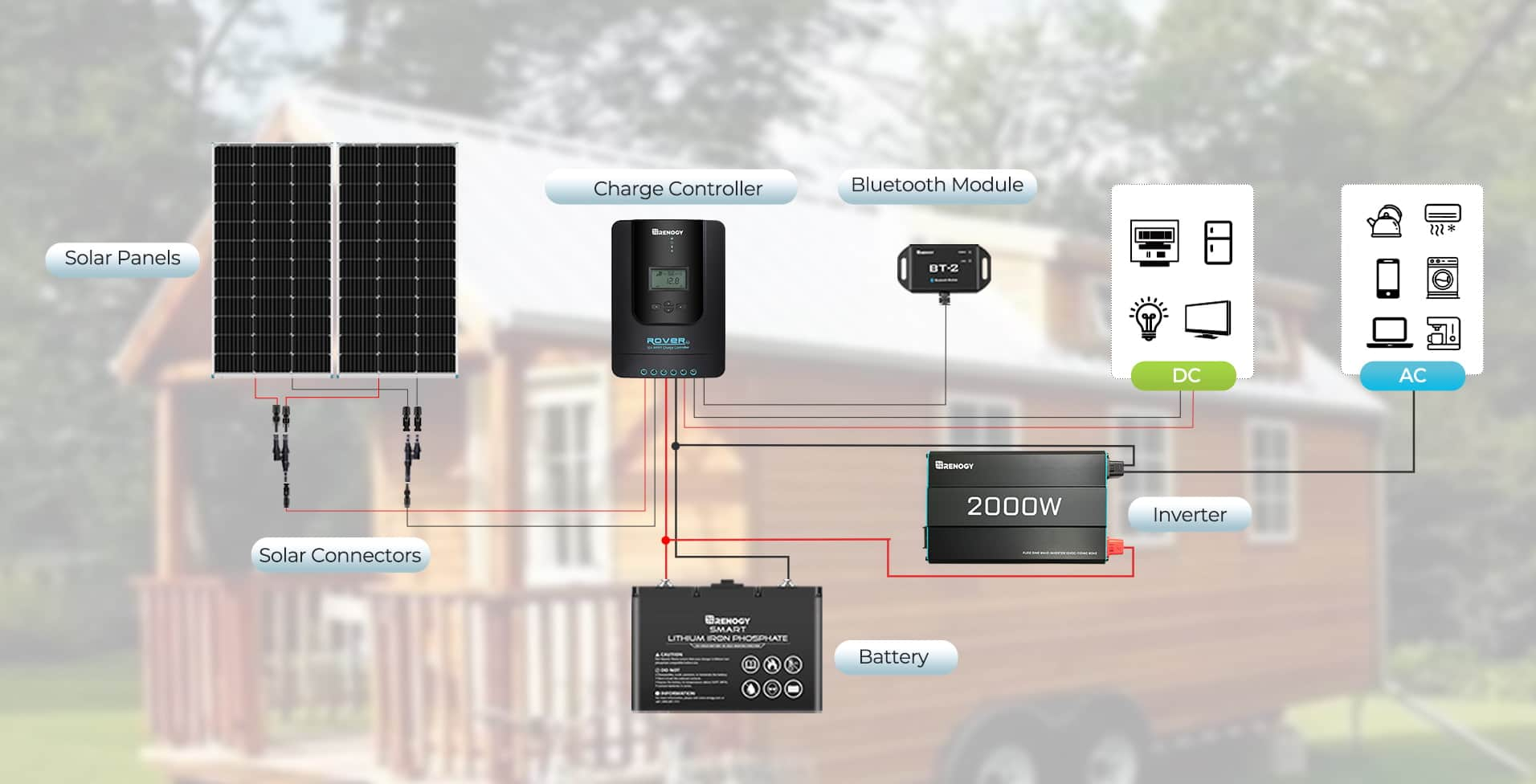
In the realm of renewable energy, solar power stands out as a beacon of sustainability. But have you ever wondered how those gleaming solar panels atop roofs or sprawling solar farms power our homes and businesses? Well, that is where a solar inverter comes into play. In this post, we'll delve into what a solar inverter is, how it works its magic, their capacities, and explore Renogy and RICH SOLAR inverters as a shining example.
What is a Solar Inverter?
Simply put, a solar inverter is the heart and soul of a solar power system. It's the vital component that converts the direct current (DC) electricity generated by solar panels into alternating current (AC) electricity, which is the standard form of electricity used in homes and businesses. Without a solar inverter, all that sun-soaked energy captured by solar panels would remain unusable.
How Does it Work?
The magic of a solar inverter lies in its ability to perform the DC to AC conversion seamlessly. Here's a quick breakdown of how it works:
- DC Electricity Conversion: Solar panels generate electricity when sunlight strikes them, producing a flow of DC electricity. This DC electricity is then fed into the solar inverter.
- Inversion Process: Inside the solar inverter, sophisticated electronics work their magic. They rapidly switch the DC electricity back and forth, mimicking the characteristics of AC electricity.
- AC Electricity Output: The converted AC electricity is then outputted by the solar inverter, ready to power your home or be fed into the grid.
It's this intricate process that allows solar energy to seamlessly integrate into our existing electrical systems.
What is it Used For?
Solar inverters play a crucial role in making solar energy practical and accessible for residential, commercial, and industrial applications. Here are some key uses:
- Residential Solar Systems: In homes, solar inverters ensure that the electricity generated by rooftop solar panels can power household appliances and electronics, reducing dependence on grid electricity and lowering utility bills.
- Commercial Installations: Solar inverters are integral to larger-scale solar installations on commercial buildings or industrial facilities. They help businesses harness solar power to offset energy costs and reduce their carbon footprint.
- Grid-Tied Systems: Many solar energy systems are connected to the electrical grid. Solar inverters facilitate this connection by converting solar-generated electricity into a form that can be fed into the grid, allowing users to earn credits for excess energy produced.
Renogy Inverters
Renogy is renowned for its innovative solar solutions, including a range of high-quality inverters tailored to meet diverse energy needs. Some of Renogy's inverters boast advanced features such as MPPT (Maximum Power Point Tracking) technology, which optimizes energy harvest, ensuring maximum efficiency even in varying weather conditions.
RICH SOLAR Inverters
Relatively new to solar industry with around 18 years of experience, RICH SOLAR offers affordable, high-quality solar components. Their inverters go toe-to-toe with any other solar manufacturer. They offer a variety of inverters from 1000-3000 12V and 24V Pure Sine Wave Inverters to 3000-6500W 48V Hybrid Inverters. If you are looking for a quality inverter from a company that puts customer service at the heart of their values, RICH SOLAR products are for you.
Different Capacities of Solar Inverters and Their Applications
- Microinverters (250W - 350W): Microinverters are ideal for residential applications where space is limited or where shading or orientation issues affect individual panels. Each solar panel is equipped with its own microinverter, allowing for independent operation and maximizing energy production.
- String Inverters (1kW - 100kW+): String inverters are commonly used in larger residential and commercial installations. They are cost-effective and efficient, especially when installed in systems with uniform panel orientation and minimal shading.
- Hybrid Inverters (3kW - 10kW): Hybrid inverters combine the functions of a solar inverter, a battery charger, and a grid-tie inverter. They are ideal for homeowners looking to add energy storage to their solar system, enabling them to store excess energy for use during periods of low sunlight or power outages.
- Grid-Tie Inverters (1kW - 1MW+): Grid-tie inverters are designed to synchronize with the utility grid, allowing homeowners to offset their electricity bills by exporting excess solar power to the grid. They are commonly used in large-scale commercial and utility-scale solar installations.
Solar inverters may not always steal the spotlight in the world of solar energy, but they are undoubtedly the unsung heroes driving the renewable revolution. By seamlessly converting sunlight into usable electricity, solar inverters pave the way for a brighter, more sustainable future. With companies like Renogy and RICH SOLAR leading the charge with innovative inverters, the transition to solar power has never been more promising. So, next time you bask in the glow of solar energy, remember to tip your hat to the humble solar inverter powering it all. Shop Renogy and RICH SOLAR inverters at Solar Generators and Power Stations Plus.





